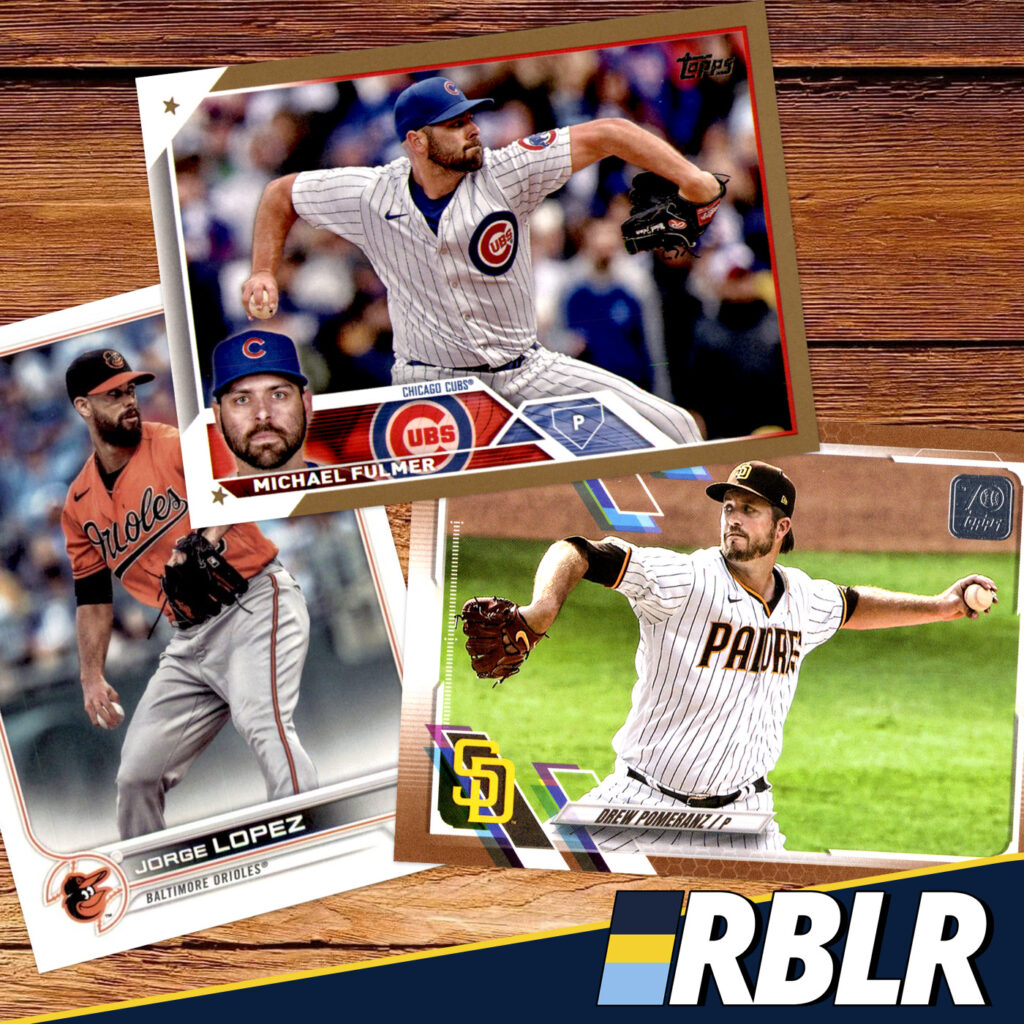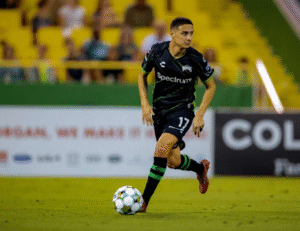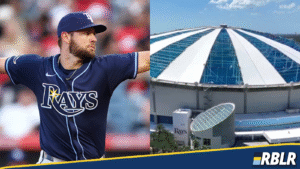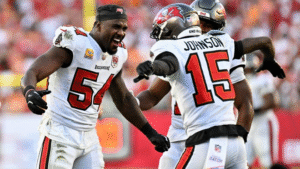Bunikiewicz: Six Arms (& More!) To Build A Rays Bullpen

Going into the ‘23-’24 off-season and recovering from a recent postseason loss to the Rangers, I’m taking a look at some relievers who could slot into a newly-formed Rays’ bullpen to replace Jake Diekman and Robert Stephenson while protecting relievers like Garrett Cleavinger and Jason Adam who are returning from injury.
My focus for these targets were recent success, high-level stuff, and potential for improved results. This article comprises potential 40-man roster additions with a high-chance of cracking a big-league team in Spring Training.
Instead of wasting time by looking at reliever-aces like Josh Hader and Jordan Hicks or effective, expensive relievers like Matt Moore and Reynaldo Lopez, I chose to look at realistic, upside-driven candidates to replace arms in the bullpen and pitch meaningful, potent innings.
Although some of my targets are more hopeful from the standpoint that the Rays might not pursue aging, injured pitchers, most of this list is realistic in its approach. The Rays are incredibly hard to predict when it comes to who they sign exactly; however, their general formula for developing a reliever is to acquire really good stuff with room to build/add pitches and control that pitcher’s command or location.
The Known Guys
Starting with the more well-renowned relievers: Michael Fulmer, Drew Pomeranz, & Jorge Lopez:
Drew Pomeranz (34)
Drew Pomeranz is an interesting LHP who hasn’t been healthy since 2021, dealing with shoulder injuries in ‘21 and left forearm and elbow issues in ‘22 and ‘23, but the former All-Star presents an intriguing arsenal with upside when healthy. Pomeranz features a North-South pronation-biased arsenal with a carry FF and gyro knuckle-curve (KNCV). The pairing resulted in strong results as he posted a 39.7 K%, 2.9 Barrel %, and .244 xwOBAcon (expected weighted on-base average on contact) in ‘20.
The two adjustments that I want to make to Pomeranz’s arsenal – adding a bridge pitch, either a gyro FC or gyro SL: ~88 at 0 iVB, and a SPL (split-change). The bridge pitch fills in the sizable gap between his FF and CU, creating a cohesive arsenal and diversity against both hands. The SPL would be implemented to create another look against RHBs, especially by reducing his high spin on the CH and creating drop (5-10 iVB at ~86).
A comparison for Drew Pomeranz would be a left-handed, high 3 ⁄ 4 slot, version of James Karinchak due to their similarities of carry FFs and hard, gyro CUs.
Jorge Lopez (30)
Jorge Lopez possesses an electric pronation-biased arsenal, which means he naturally generates arm-side movement on his FAs and CH, with a close comparison to Joe Kelly. Both Lopez and Kelly throw running FAs and harder breaking balls. After being traded to MIN from BAL for Yennier Cano and Cade Povich during a monstrous, All-Star first-half, Lopez’s results cratered with changes to his pitch usage and release. MIN kept similar pitch characteristics for Lopez in his first half season with the team; however, MIN dropped his SI usage from 52.5% in September ‘22 to 30.9% in April ‘23. His release also dropped an inch and a half on his SI (5.81 ft, ‘22 to 5.64 in ‘23).
My point is that Lopez is reliant on his SI for beneficial results as correlated by his elite 58.5% ground-ball rate in ‘22. Lopez needs to keep throwing his SIs and FFs to RHBs but stop throwing as many fastballs (FAs) to LHBs. LHBs perform well against FFs in general, and Lopez’s FF has below-average movement. Lopez should increase his SLs and CHs to LHBs while throwing his SL harder to have a more cutterish shape. Lopez’s CU is his whiff and money pitch against both hands but his current usage on the CU is satisfactory.
Lopez can consistently throw right-on-right CHs which creates a tough AB for RHBs when executed well and should perform better with a more general target, even thought his walk rate was average this year at 8.3%, due to his historically high walk rates ( bottom 16% in ‘22, bottom quarter in ‘21, and bottom 11% in ‘20).
Michael Fulmer (31)
Editor’s note: Since publishing Fulmer has had surgery and is expected to miss the entire 2024 season. However, this analysis still represents a good candidate for the Rays to pursue.
Fulmer possesses a supination-biased arsenal, which means he effectively cuts the ball and generates sweep naturally, with multiple plus pitches depending on the stuff evaluator one uses, but the two best pitches whiff%-wise are his Sweeper (SW) and Change-up (CH), 48.1% and 58.1% respectively. Fulmer also throws his Four-Seam (FF), Cutter (FC), and Sinker (SI) the rest of the time (61.7%).
His FF profiles similarly to a true cut-fastball like Drew Rasmussen or Pete Fairbanks, and his FC profiles like a hard two-plane breaker. He’ll sprinkle in the SI to RHBs as it posts solid seam-shifted wake movement quality and results. Fulmer generates a ton of weak contact (top 8% in MLB) and a ton of whiffs (also top 8% in MLB). Although he is effective at getting softly-hit outs and picks up strikeouts, Fulmer has posted below avg. walk rates in ‘22 and ‘23.
The only change that I’d make to Fulmer is pitch usage. Although I really like the Cubs’ approach to his pitch usage in ‘23, I would increase the amount of CHs and FCs he throws to LHBs while slightly decreasing FF usage against lefties. Perhaps the Cubs opted for more FF usage because he can control it better than the CH and FC; however, these two pitches could make the FF play up and increase success against LHBs.
Two scenarios could play out with a Fulmer signing – he becomes an effective high-leverage reliever or he functions in a Collin McHugh-esque bulk role. Fulmer pitched in a high-leverage role for both the Tigers and Cubs over the last two years; however, he has the pitch mix and starting experience to function as a bulk/multi-inning pitcher. Determining Fulmer’s FF command is necessary to see if he can start again, otherwise, Fulmer appears to be an invaluable high-leverage arm.
Rehabbing Arms w/ Upside
Moving onto rehabbing projects or guys who are High-Risk, High Reward – Corey Knebel, Dillon Maples, and Jesse Hahn. I wanted to include Blake Treinen and Jimmy Nelson but believe that the Dodgers will sign them due to their fascinating supination-biased arsenals headlined by hard sliders with plus movement. Kyle Crick is equally interesting due to his arsenal and super-SW, but I think he’s battling injuries and wouldn’t sign with the Rays due to his inability to crack the team last spring.
Corey Knebel (31)
Corey Knebel received a shoulder injury late in 2022 and hasn’t signed a contract because of the injury. Regardless of his recovery timeline, Knebel possesses an intriguing FF-KNCV combo. This combination, however effective in years past, needs a bridge FC/SL with a gyro element to increase the whiffs on his FF and KNCV. A gyro pitch would also boost Knebel’s in-zone rate and BB%.
Knebel occasionally threw a SW in ‘22 and CH in ‘20 but neither pitch seemed to stick with him. Knebel could use both to create diversity in his arsenal, and I particularly like the CH in ‘20. Utilizing a middle-middle set-up and bullet slider will help his command and stuff play up, and I think decreasing the amount of FFs to LHBs and increasing gyro SLs to both hands will generate future success for the storied closer.
Dillon Maples (31)
Dillon Maples is an exceptional supinator headlined by a power slider with elite horizontal movement (87.5 w/ -14.5 inches of horizontal break!!!). Maples also throws a hard CU with elite total movement and throws two decent FAs – a SI and FF which performed poorly in ‘21, .468 and .413 xwOBA.
The main issues for Dillon Maples are health and command. Maples recently took a break from baseball to recover from a shoulder surgery and regularly posts 18% walk rates when healthy. Developing a traditional gyro SL/FC to pair with Maples’ extreme horizontal pitches is pertinent to getting more in-zone and adding a middle-middle set-up should help his zone consistency. Maples could lean into his supination bias by developing a seam-shifted wake (SSW) SI and CH while retaining his hard, cutting FF.
The main takeaway for Maples: rip a gyro pitch in-zone and follow it up with the elite breaking balls, develop an SSW pitch to go arm-side, and sparingly use the FF to generate weak contact or a whiff.
Jesse Hahn (34)
Jesse Hahn is another exciting arm stuff-wise that hasn’t pitched in a while. Hahn presents a similar problem to Knebel and Maples – finding the zone and staying healthy. Hahn has elite SI and CU shapes and definitely should add a gyro pitch to tunnel the two, and a gyro pitch typically makes a FA shape better. He occasionally features a FF, SL, and CH with the only plus shape being the SL which he cannot control well.
Two other rehabbing, veteran projects with high stuff are Dan Altavilla (31) and Zack Britton (35). Altavilla signed an MiLB deal with the Red Sox in ‘23 and only made 8 appearances with a poor 14.3 K% and 10.2 BB%. Altavilla has an elite FF from a low release which creates an above average vertical approach angle (VAA) and a hard gyro SL (90 @ ~6-7 iVB) to pair with his FF. Altavilla could add a third pitch in a CH, but his current two-pitch mix is devastating to hitters. Telling Altavilla to attack hitters with his elite pitches and setting up middle-middle to combat his walk rate (13.5%) will revitalize the flamethrower’s career. Former all-star Zack Britton wasn’t tendered a contract in ‘23 as he rehabbed from injuries, but Britton’s supination-biased bowling-ball SI and sweepy SL arsenal could feature strong results in the MLB once more. Britton’s biggest weakness appears to be his arsenal’s lack of a bridge pitch. A harder gyro SL, which Britton could most definitely throw, will create whiffs by itself and cause both pitches to look like the SL out-of-hand, confusing the batter. Britton might need to develop a SSW CH against RHBs.
On the Cusp of a 40-Man Spot
Some pitchers that I think warrant a potential 40-man spot or are signed to a team in free agency as opposed to an MiLB deal: Austin Voth (31), Chad Kuhl (31), and Wil Crowe (29). All three of these pitchers have experience in a starting and bulk capacity; however, these three could develop into relief aces given time. Depending on the pursuing team (hopefully the Rays), said team could utilize each of these guys in a different role.
Austin Voth is a must-acquire off-season target because of his arsenal’s uniqueness and diversity with his riding SW as the best pitch of the bunch. Voth is a supinator, meaning that he could potentially develop a seam-shifted SI and CH as well. I’d prefer Voth to try a SPL or FS because previous CH grips never stuck to his arsenal and resulted in poor movement/quality offerings. Voth throws three breaking balls: a riding SW, a sweeping CU, and an FC; he also features a relatively average FF that collects whiffs (24.3% in ‘23).
I think the key to unlocking Voth’s potential would be decreasing his fastball usage overall but specifically to LHBs. His FC will most likely perform better against LHBs due to its nature of running into the hands of LHBs, generating weak contact. Voth should increase his usage of the SW to around 30-35% against RHBs, throwing the CU and FC when necessary. His FF should be effective against RHBs as well. Voth would also benefit from a central pitching set-up for his bigger breaking balls.
Chad Kuhl signed a deal with the Nationals last season, and his season didn’t go well as he performed inconsistently and then took a break from the game to support his wife in her battle with breast cancer. Kuhl possesses a couple of interesting pitches – primarily a hard gyro SL (35.8 whiff% in ‘23), which could become a bullet ball like R. Stephenson’s, and a recently developed rising 2-seam SI/FF a la Josh Hader, courtesy of the Nationals. Kuhl also throws a CU, CH, and FF, but his FF is a subpar pitch. Kuhl worked as a starter and in relief last year with a bump in velocity when he joined the bullpen.
One noticeable change for Kuhl is that the Nationals increased his arm slot by 3 inches as opposed to ‘22 and ‘21. Kuhl’s delivery has a ton of moving parts, which makes finding the zone a difficult task for the pitcher. Three adjustments for Kuhl: increase his CU and CH usage overall while decreasing SI and FF usage, throwing the CU and CH harder/utilizing seam effects, and adding a middle-middle target to find the zone more often and rip his stuff as hard as possible.
Due to his supination prowess, Wil Crowe throws a hard, riding SW (8th hardest SW w/ 10+ inches of horizontal break in MLB), gyro SL, seam-shifted wake CH, and FF that profiles like a cutter. Crowe also featured a CU and seam-shifted SI in 2022. Crowe is the poor man’s Drew Rasmussen as he possesses similar pitch quality but lacks the command and success that Ras creates for himself.
Depending on Crowe’s command of his FF, he could get a back-end SP job or bulk-role for a team, but his SW-SL combo will be devastating as a reliever. Lance Brozowski posted a stat that a SW followed by a SW or a gyro SL followed by a gyro SL or SL-SW combo creates a 35% whiff which is great news for Crowe, who throws both pitches well. Leaning into this combo, utilizing more SWs overall, and having a similar pitch usage to ‘22 to attack RHBs and LHBs theoretically leads to success for the big right-hander.







